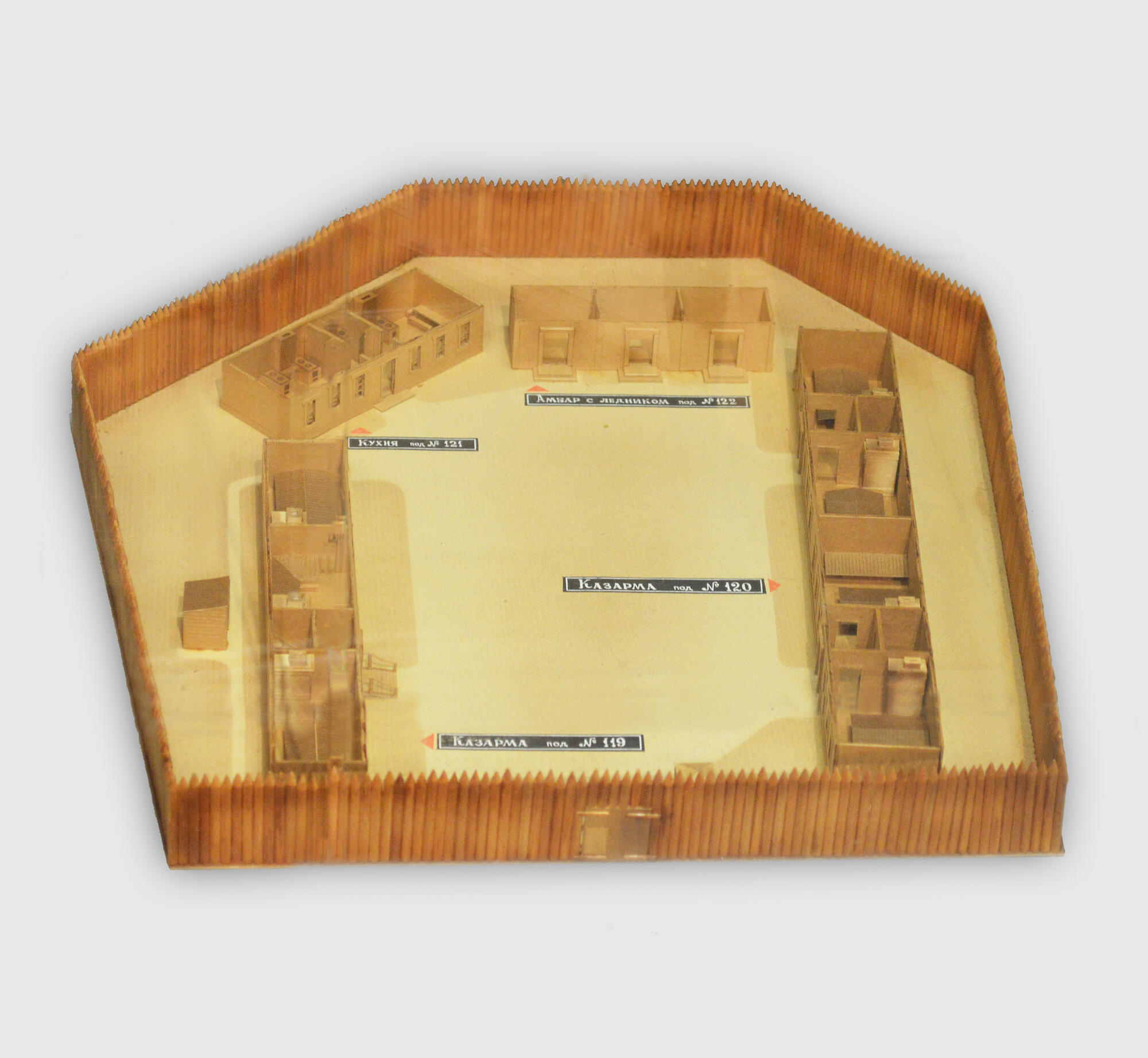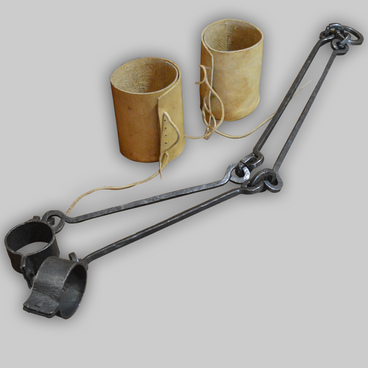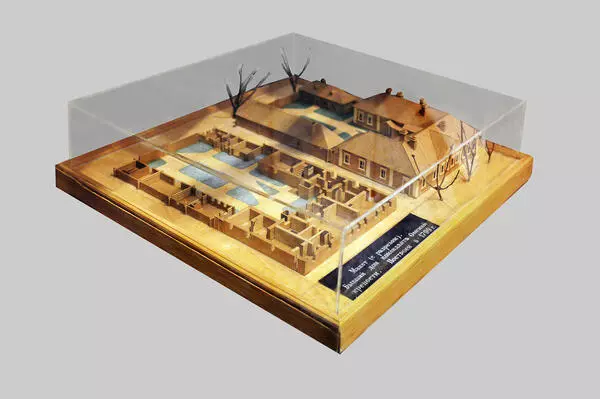The exhibit is one of the earliest works by the famous microminiaturist artist Anatoly Konenko. The replica of the fortress prison was crafted exclusively for the first exhibition of the Dostoevsky Omsk Literary Museum. The replica of the prison was restored based on the 1847 drawing. The original copy of it is kept in the Russian State Archive of Military History in Moscow.
The prison was located on the territory of the former Stepnoy bastion of the Omsk fortress. It had the shape of an irregular hexagon. The territory was surrounded by a high fence made of pillars, pointed at the end. The prison comprised two barracks, a kitchen, and household outbuildings.
Here is a description of the prison from the House of the Dead: ‘Represent to yourself a court-yard, two hundred feet long, and one hundred and fifty feet broad, enclosed by an irregular hexagonal palisade, formed of stakes thrust deep into the earth. So much for the external surroundings of the prison. On one side of the palisade is a great gate, solid, and always shut; watched perpetually by the sentinels, and never opened, except when the convicts go out to work. <…> On penetrating into the enclosure one sees a few buildings. On each side of a vast court are stretched forth two wooden constructions, made of trunks of trees, and only one story tall. These are convicts' barracks. Here the prisoners are confined, divided into several classes. At the end of the enclosure may be seen a house, which serves as a kitchen, divided into two compartments. Behind it is another building, which serves at once as cellar, loft, and barn. The center of the enclosure, completely barren, is a large open space. Here the prisoners are drawn up in ranks, three times a day. They are identified, and must answer to their names, morning, noon, and evening, besides several times in the course of the day if the soldiers on guard are suspicious and clever at counting. All around, between the palisades and the buildings there remains a sufficiently large space, where some of the prisoners who are misanthropes, or of a somber turn of mind, like to walk about when they are not at work. There they go turning over their favorite thoughts, shielded from all observation. When I met them during those walks of theirs, I took pleasure in observing their sad, deeply-marked countenances, and in guessing their thoughts. The favurite occupation of one of the convicts, during the moments of liberty left to him from his hard labor, was to count the palisades. There were fifteen hundred of them. He had counted them all, and knew them nearly by heart. Every one of them represented to him a day of confinement; but, counting them daily in this manner, he knew exactly the number of days that he had still to pass in the prison. He was sincerely happy when he had finished one side of the hexagon; yet he had to wait for his liberation many long years. But one learns patience in a prison’.
The prison was located on the territory of the former Stepnoy bastion of the Omsk fortress. It had the shape of an irregular hexagon. The territory was surrounded by a high fence made of pillars, pointed at the end. The prison comprised two barracks, a kitchen, and household outbuildings.
Here is a description of the prison from the House of the Dead: ‘Represent to yourself a court-yard, two hundred feet long, and one hundred and fifty feet broad, enclosed by an irregular hexagonal palisade, formed of stakes thrust deep into the earth. So much for the external surroundings of the prison. On one side of the palisade is a great gate, solid, and always shut; watched perpetually by the sentinels, and never opened, except when the convicts go out to work. <…> On penetrating into the enclosure one sees a few buildings. On each side of a vast court are stretched forth two wooden constructions, made of trunks of trees, and only one story tall. These are convicts' barracks. Here the prisoners are confined, divided into several classes. At the end of the enclosure may be seen a house, which serves as a kitchen, divided into two compartments. Behind it is another building, which serves at once as cellar, loft, and barn. The center of the enclosure, completely barren, is a large open space. Here the prisoners are drawn up in ranks, three times a day. They are identified, and must answer to their names, morning, noon, and evening, besides several times in the course of the day if the soldiers on guard are suspicious and clever at counting. All around, between the palisades and the buildings there remains a sufficiently large space, where some of the prisoners who are misanthropes, or of a somber turn of mind, like to walk about when they are not at work. There they go turning over their favorite thoughts, shielded from all observation. When I met them during those walks of theirs, I took pleasure in observing their sad, deeply-marked countenances, and in guessing their thoughts. The favurite occupation of one of the convicts, during the moments of liberty left to him from his hard labor, was to count the palisades. There were fifteen hundred of them. He had counted them all, and knew them nearly by heart. Every one of them represented to him a day of confinement; but, counting them daily in this manner, he knew exactly the number of days that he had still to pass in the prison. He was sincerely happy when he had finished one side of the hexagon; yet he had to wait for his liberation many long years. But one learns patience in a prison’.




